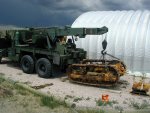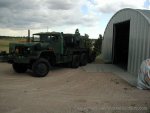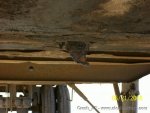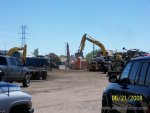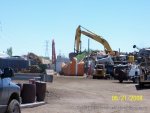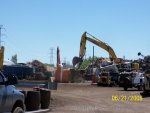Gamagoat1 said:
I'll bet they were designed to be used much heavier than the manuals indicate
I operated a wrecker crane for several years and can only concur. While it was not an M816, but a commercial application, the same principles apply. It had 26 ft max. reach and 20 metric t (44k lbs) lifting capacity. However, we regularly went way beyond that for rescue operations. I often had the impression that the engineers that designed the wrecker crane, with a heavy sigh, designed the expected abuse already into their blueprints.
I was grateful for that - on more than one occasion.
We always employed an "outrigger rattler" on the opposite side of the load. A guy would shake the outrigger. As soon as the outrigger was hardly loaded anymore, but before it was about to lift off, it would be so loose that you could rattle it. That gave the operator the exact moment for when to expect "liftoff" - invaluable when operating beyond listed capacity in a side lift, but without the desire to roll the crane truck into the ditch...
Oh, man..the times....looking back, I am sometimes thinking.."WHAT WERE WE THINKING!!"

The replacement crane was (or is) a Liebherr mobile crane LTM 1070. 4 powered axles, specialty chassis (looks abit like a HEMTT).
It is computer controlled and has sensors galore. It still has an override switch and the "outrigger rattle" works as well...
That brings me to the universal statement of wrecker crane operation: Any wrecker crane, of any given design and capacity, will have too short a reach and insufficient lifting capacity.



